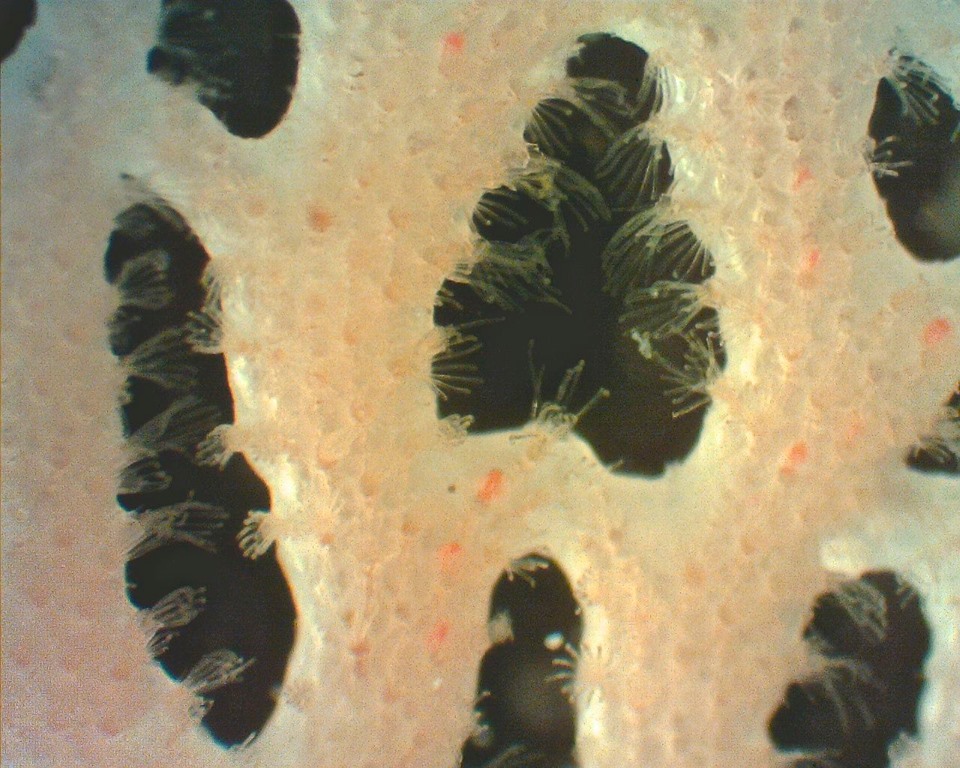Colony structure

|
| Apical growth of R. graeffei branch. |
R. graeffei is an erect, fenestrate bryozoan that forms a layer of zooids with their lophophores facing away from the substratum (though if they are attached to the underside of coral, the zooids face downwards). The colonies, known also as zoaria, consist of a series of individual zooids enclosed in calcified boxes, which attach to each other to form branches. All zooids within the colony are derived from the ancestrula (see DEVELOPMENT & SETTLEMENT). Thus colonial growth begins at the anchoring point and radiates outwards. The pattern of growth and death of individual zooids is not necessarily based on the distance from the ancestrula, as zooids may die and their polypides degenerate, making room for a new zooid (Ryland 1970).
Zooids within a colony are connected by interzooidal pores which allow communication and nutrient transport. The funiculus is a chord of tissue that links the gut of the polypide to the body wall and (indirectly) to other zooids (Ryland & Hayward 1977). In cheilostomes the flow of nutrients is regulated by a tiny plug of rosette cells within the interzooidal pore. Neither coelomic fluid nor blood can pass freely through the pores, but the funicular cells from one zooid will transfer their organic contents through the rosette cell cytoplasm to the funicular cells of the next zooid, thus allowing non-feedingzooids to survive (Ryland 1970). Bone and Keough (2010) looked at interconnectedness between zooids of two different cheilostomes to test whether the level of polymorphism present in a species was related to the number of pores connecting zooids, thus allowing better communication for a more complex system. They found the the number of connections increased with colony size, however, was unrelated to the polymorphic complexity.
Most cheilostome colonies are comprised mostly of autozooids (feeding zooids) (see ZOOID STRUCTURE) with scattered heterozooids (non-feeding zooids) which usually have no polypide (or it is reduced) (Ruppert et al. 2004). Types of heterozooids include:
Kenozooids: used to attach to the substrate (can be used as stolons, attachment discs, rootlike holdfasts, or defensive spines).
Avicularia: defense zooids with a modified operculum that can snap shut and resembles a parrot beak. They may be stalked or sessile.
Vibracula: defense and cleaning zooids, consisting of a long bristle powered by musculature that sweeps the colony to clean off sediments.

|
| Photo: Bridget Bradshaw, Heron Island, 2013. |
|